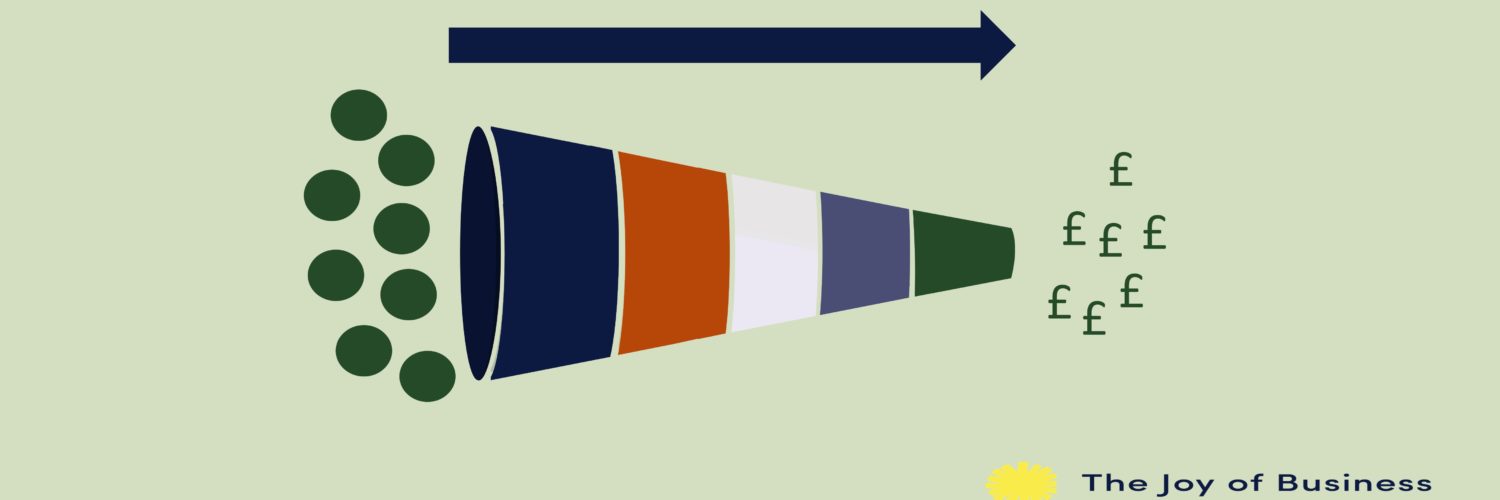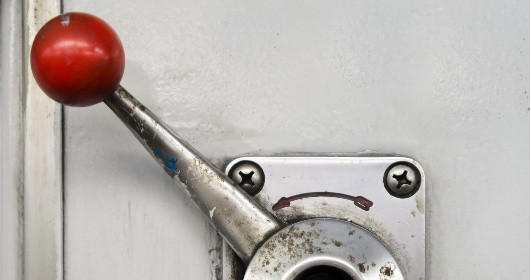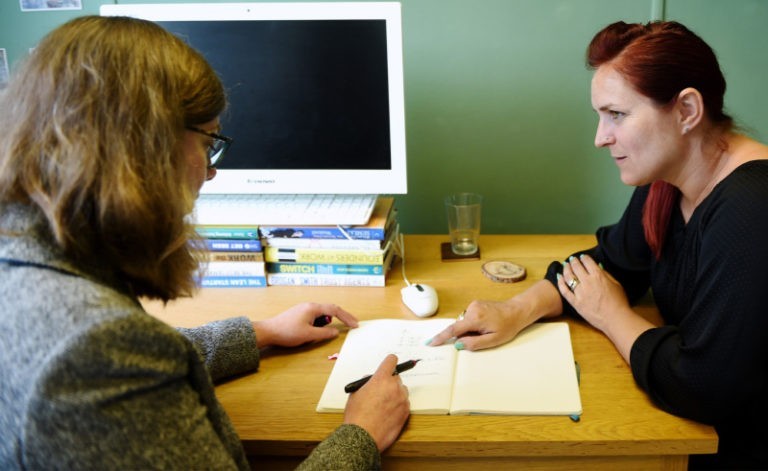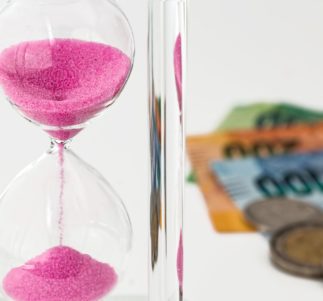Sales funnels explained

Sales funnels explained to help you understand how to put together a great pipeline of people who want to work with you.
Your sales funnel is your magic device. It’s where you put the lovely people you meet or who come to your website in at the top, turn the handle, and out of the bottom of the funnel (eventually) comes a new client. And the opportunity to send them an invoice, which means money. Which we like, as it can be exchanged for food, rent, new shoes and other good stuff.
Watch the video below for a quick lesson in sales funnels.
Why would you want a sales funnel?
If you think of marketing as being like dating, you wouldn’t expect someone to agree to sleep with you or marry you on the first date. So why do we expect people to buy from us when they first meet us?
Sure that might work if you’re selling something low priced, but even then, they’re going to do their research and check you out, as well as what else is available.
When I’m choosing a new novel at the library, even though I don’t have to pay to borrow the book, I’ll still spend a few minutes reading the first couple of pages to see if I like it enough to take a chance.
But if it’s a new book by Kim Stanley Robinson, one of my favourite authors, I’ll grab it with joy and add it to my pile. Because I’ve already spent hours building a relationship with Kim Stanley Robinson, and I know that I like almost everything he’s ever written. I already trust him to write a book that will please me, and I’ll have it straight away, please.

The sales funnel allows you to work out how to woo your clients, get them to trust you, know you and establish a relationship with you. That way, they’ll be happy to buy from you, as they already like you and what you can do for them.
It’s your opportunity to build your relationship with your prospective customers
All sales funnels are built on regular contact with your prospective customers. Just the same as a successful new relationship is built on numerous dates, pleasurable shared experiences and conversations.
The sales funnel is all about nurturing your leads and prospects. So that you are the first one they come to when they experience a problem and they already know you are the one to solve it for them.
Like a new love relationship, if you go quiet on them and ignore them, they’ll go off you. And maybe go with someone else who pays them more attention. My clients sometimes tell me that they feel like they’re being a pest, especially when they email someone they would like to work with.
But if you’re sending them useful, interesting messages in your sales funnel, you’re not being a pest at all. Even if they don’t email back straight away (or ever), regular contact keeps you in the front of their mind for when they do have a problem that you can solve.
Get more structured with your sales funnel
When you have three leads, you can remember to be in regular contact with those potential clients. If you have a dozen, you can maybe remember some of them, some of the time. But when you’ve built up 50 leads, there is no way that you can remember to be in touch and to be pro-actively lovely to them.
And when you’ve got 50 leads, and you’re busy with five clients, there’s no way that you can nurture those leads and encourage people to buy from you.
You’re then in severe danger of experiencing feast or famine syndrome, where you’ve got too much work on for a while (the feast stage), and then you have nothing at all, leading to famine.
When you are more structured and organised with a sales funnel that you’ve sat down and thought through, you will have potential clients coming to you all the time, asking you to help. And when you want some more clients, you can just pull a lever and hook some in.

Isn’t it about time you sat down and thought through your sales funnel? And worked out how to make sure that you are at the front of the minds of your potential clients so that they come to you when they’re ready to buy? Or to ensure that when you’re ready to take on a new client, you can take action to bring in a good one who is already a fan of your work?
The next part of this article goes through the sales funnel process and gives you some tips on how to keep nudging people through to give you a steady stream of new work.
I’ve had to generalise here, based on my experience of advising hundreds of businesses on how to develop an effective sales funnel.
So, if you’d like us to sit down and work out exactly how this should work for you and your business, we can book a 2-hour strategy session to make this work for you. Here’s how to book in a special session…

Sales funnels for high-value services
If you sell a core thing for more than 2k, then you sell what I call high-value services. This might be selling your time, because you’re a trainer, coach or consultant, or you run an agency selling services like web design or data analysis.
The important thing is that 2k upwards is a good amount of money – you’ll definitely get out of bed and do some work for 2k or more.
If there’s the chance that someone might give you upwards of 2k, it’s worth spending some time on nurturing them and making a good relationship with them.
When you factor in the potential lifetime value of this customer, understanding that they may well come back and spend more money with you over the next few years. The case for spending time and effort on being lovely to them becomes even stronger.
By the way, not charging at least 2k or upwards, you should start with my Sweetspot Pricing book before you even think about your sales funnel. Otherwise, you’ll have a hit list of potential clients who you’re going to drastically undercharge.
You want about a dozen of the potential clients you love the most on your A list for maximum love and attention at any one time. And you need to write them down somewhere you’re going to see and refer to the list regularly.

I get my business advice clients to do this regularly, and everyone starts with great intentions with their “hit list” of A list leads, but a couple of months later, they’ve forgotten about them.
I’ve done it myself, so I completely get it, but make your list and schedule regular actions for keeping in touch with these people. You’ll see more about those actions or nudges in a moment.
You don’t have to go quite as far as one of my business coaching clients. I’ll call her Maggie, as she wasn’t called Maggie.
Maggies story
Maggie and I had talked about her A list leads, and she’d gone away to make up her list. She told me that I should come round to her office and see what she’d done. When I got there, one whole wall was covered in photos she’d printed out from LinkedIn.
Arrows were pointing to the top priorities, stickers for repeat contacts, and notes stuck to them. It looked a bit like one of those investigation boards the police have in the crime dramas.
To be honest, I found it a little spooky, and Maggie only kept it going for a couple of months. But she did land some big contracts by using this set up to focus on her A list of leads, so it worked.
Sales funnels for online products
When you’re selling online products or lower value services, you’re going to need a lot more people coming in to make it worthwhile for you to do all this work. So you can’t spend so much time per lead.
You’re going to need an automated sales funnel to handle this kind of volume. This means setting up an email series. This is much more successful than social media, advertising or retargeting Facebook ads, because you already have a relationship with that person through regular emails.
An automated email series is also useful when you’re selling high-value services to people who are not on your A list. So you can automate keeping in touch with the people who are a little less likely to buy from you or are less likely to buy right now.
Most people I talk to are either completely new to the idea of a sales funnel by email. Or they’re already using email a little but sending out email newsletters which they write just before sending out.
Maybe you’ve got a list you’ve collected already or you’re sending out a regular email newsletter or you have an automated email series in place. The next part of this article is what I’ve learnt the hard way about sending out emails to leads.
The different stages of the sales funnel
Sales funnel stage 1 – Welcome
The first stage of meeting a new lead is important. When you meet someone, you want to get across what it is that you do. And the benefits you bring with the work you do for clients. Especially the benefits.
If I lazily tell you that I’m a business coach, you’ll instantly pigeonhole me. You’ll file me in your head with my competitors, and the business coaches you’ve met before.
If I tell you that I help people to make more money and have more fun by giving them everything they need to run a successful business, that’s much more attractive. And it’s what I do, the coaching, business advice, programmes and books are just how I do that.
If you met a gardener, she wouldn’t tell you that she was a person who used a spade, would she? So don’t focus on how you do your thing, or the tools you use – tell them about the outcomes people get from working with you first.
Here are some thoughts on how to have a hot elevator pitch, which you can also use to focus your mind on getting across the benefits and outcomes to your potential clients at the beginning of your sales funnel.
And if you haven’t worked out exactly who you want to attract, this is a handy guide to developing your customer avatar.
You also want to get across some of your brand friendliness. Make it clear that you are happy to talk to them and interact. And start encouraging interaction and engagement right from the start.
But don’t bombard people with how great you are, and all the cool things you can do with them. With our dating analogy, this would be like meeting someone in a bar, and telling them how great you are in bed. Be friendly, be interested in them, and be useful.

Asking people questions, getting their opinion and sending them great stuff is all part of the process of nudging people down your sales pipeline. All these steps bring them closer to the point where they book you to do some work or buy one of your products.
Sales funnel stage 2 – Qualify and segment
We’ve already talked about the A list for high-value services. When you’re taking a more manual, individual approach to your sale funnel you will want to qualify your leads in some way. Your criteria might look something like this:
- Do they sound keen?
- Have they been referred by someone else, especially someone who has sent you high quality leads before?
- Are they a good fit for you? That is, could you help them in some way?
- Do they look like they have some budget to spend?
My confession
I look at a potential client’s website, their LinkedIn profile, and other social media to get an idea of whether they’d be a good fit for me.
Partly this is to judge if I can help them, and partly it’s just research to find out more about their business before I talk to them.
But one time, I had very little information about a new client, but I could see his home address. I googled this and found through Zoopla that his house was worth nearly a million so I ensured I made a special effort to talk to him.

When you’re working on an automated sales funnel for online products or just bringing in new leads through your website, you’ve often not got a lot of information to qualify people on and see which ones are more of a target for you.
It can be tempting to send out the same nudges and nurturing emails to everyone. And there’s nothing wrong with this at all. If you’re just getting started, it’s much better to start building your list and engaging with potential people.
Don’t make your sales funnel too complicated
It’s tempting to get overly complicated with your sales funnel too early, then never getting round to completing it and that way you end up not talking to anyone.
Don’t try to run before you can walk – just write six good emails with useful, engaging content, and send those out once a fortnight to the people who join your list.
That gives you 12 weeks to write some more emails and to start delving into a more sophisticated approach.
There’s more information below on how to write those emails, and get your list of lovely new people engaged at an early stage.
You can qualify people even if you’ve never actually talked to them, and only have their email addresses, simply by seeing if they read your emails. This corresponds to the “do they seem keen?” criteria above.
I use Drip email for sending out automated emails. Drip was my upgrade from MailChimp, which is fine for sending out one series of emails, but didn’t give me enough flexibility to be able to send out different emails to different groups of people.
In Drip, I can see who has been reading my emails the most, who is most likely to buy something from me. And who it might be good to send some more lovely content to, so I can engage them even more.
Sales funnel stage 3 – Make friends
Remember that the aim of this is not to just talk about you and what you sell. We want to make friends, to get the lovely people on your list to love you, trust you and come to you first when they’re ready to buy.
When you think of how people buy, they’re always making an emotional decision. Sure, we tell ourselves that we’ve made a rational decision on which video hosting software or new shoes to purchase, but we’re human. And human behaviour is not rational.
Your potential customers are much more likely to buy from you if they think well of you. If they regularly hear from you with interesting, useful content, written in a friendly accessible way, they will be much more likely to buy from you and recommend you to their friends.
And if they regularly click through to your website, take a quiz or survey, or email you back because you’ve asked their opinion on something, they’ll be much much more likely to buy from you.
You probably send interesting snippets to your friends and family. A friend might say to me:
“Hey, Julia, here’s a website with easy vegetarian Japanese food recipes you might like…”
Because they know that I’m trying to learn how to cook Japanese food. Or they’ve sampled my attempts so far, and desperately want me to get better at it.

“Hey Julia, here’s a report on how pension funds are forcing the companies they hold shares in to be more environmentally conscious”.
This is a real one that someone sent me yesterday because they know that I’m interested in business, the economy and green politics.
Think of your potential customers as your friends, and send them the content that they are going to find useful.
Sales funnel stage 4 – Nurture your new relationship
How likely is it that the person you’ve just met is going to be ready to buy from you right there and then? Not so much.
Maybe they don’t have a need for you right this minute. Maybe the problem that you can solve isn’t apparent to them at the moment. Or perhaps it’s not painful enough for them to act. Or maybe they don’t have the money to spend on your level of service at the moment, but they will in 2 years time.
My record for someone being in my sales funnel is 12 years. It took 12 years of being in my (automated) sales funnel, plus three un-automated coffee and cake sessions for a client to be in the right place to start business coaching with me.
I’ve had other clients who have come back for more business advice because the first advice was useful for them and they’ve been getting my business tips and stories by email for years. They wouldn’t dream of shopping around for a different business advisor.
If I didn’t have my structured sales funnel in place, they wouldn’t have come to me. They probably wouldn’t even remember my name, just a vague recollection of some woman with glasses.

Don’t let these lovely people escape! You want their money, and they (at some point) will need what you sell. Or their friends well. And if you sell something genuinely useful, something which is going to make their lives better in some way (and I hope you do) then it’s not fair to them to let them forget you. They need your great stuff.
Sales funnel stage 5 – educate
It can be tempting to rely completely on friendly, useful content that you send out. That’s all great and helps keep people in the sales funnel. But it only gradually nudges them towards the end of the funnel where they actually buy something.
I reckon that you probably already have friends. And you’re not reading this article about what is a sales funnel because you want more friends. What we want is more sales, right?
One of the mistakes I’ve definitely made over the years is to be content with just sending out nurturing emails to my list. Maybe that’s why my record for someone being in the sales funnel is 12 years.
You also need to educate your potential clients about what you do, who it’s good for, and to put the idea in their head that they should buy from you.
It’s okay to sell. It’s okay to send out sales emails. They know that you’re running a business and that you might invite them to buy something. And it’s okay if someone gets a sales email and then unsubscribes.
Your nurture emails should contain consistent messages about the kind of outcomes you achieve for your customers. This doesn’t have to be bragging; it can be quite subtle. But if you don’t talk about what you do, and why it’s good, you will lose a lot of the impact.
In fact, it would be easy for someone to be subscribed to your emails (or your useful nudges which you send to your A list) and to not really know what you do.
I see emails all the time which update people about what’s happening in their industry or have links to useful content, but don’t mention at all what that company does.
Sales funnel stage 6 – Agitate
Which brings us to PASOP or PASO. PASOP stands for:
- Problem
- Agitate
- Solution
- Outcome
- Problem
When you talk to a friend about their problem, you’ll often end up paraphrasing their problem back to them or talking about someone else who had a similar problem. Your conversation with your pal about her boyfriend might be along these lines
“It sounds like you’re worried that he’s working too much and not taking any time out for you and the kids. Remember Jenny; she ended up leaving Karl because he became boring when he set up the new company, just working all the time.”
You can use a similar process with your sales emails. You tell people about the problems they might have, in a way that they will recognise their problem. And then you agitate the problem a little bit.
In your emails, you can talk about other people who had that problem, and it had terrible consequences for them. Perhaps you could use some statistics to show how this problem can end up. Or you talk about the emotional effect of that problem that your prospective client might have.
And you offer a solution to that problem. Hey – that’s what you sell, the answer to a set of problems your client might have.
Not only do you offer a solution, but you also show them the outcome of taking up that solution. How your other clients had that problem, and by taking up your solution they felt better/made more money/looked ten years younger…
Here’s a comprehensive list of potential customer problems, and how you might meet their needs which will help you to match what you offer with the challenges and desired outcomes of your potential clients.
Here’s how it might work for an imaginary carbon offsetting company.
- First email – Friendly email about your company and how you care about climate change, just like your prospective customer.
- Second email – A lovely story about one of your innovative carbon offsetting projects, educating your client about what you do.
- Third email – Another lovely story.
- Fourth email – Talk about their problem, which might be feeling guilty about flying for work.
- Fifth email – Agitate the problem by talking about how our society’s addiction to flying around the world puts too much carbon in the atmosphere, leading to climate change which has caused the swallow population to decline by 40%.
- Sixth email – Offer your solution – carbon offsetting for individuals which also creates new habitats for swallows on their migration route.
- Final email – Lovely story about the swallows.
Do you see what happens there? We make friends, educate them about our company and what it does, talk about the potential client’s problem, and the emotions that go with that problem. And then agitate with some more emotional stirring.
We then offer the solution which offers to replace the potential customers horrible feeling of guilt with a warm feeling of being able to help the swallows.
I made this business up, and now I want to go and find them in the real world and buy the swallows some carbon-absorbing trees.

Sales funnel step 7 – Continue and keep them coming back
Earlier on, I advised you to get started with a simple sequence. And I’ve added some tips on how to structure your emails and nudges to prospective clients. But I’ve missed out the biggest and most important part of this guide to an effective sales funnel.
And that’s you have to keep doing it. You have to keep talking to your new friends. Keep engaging them, stimulating them, presenting them with issues, problems and how your product/service can solve their problems and bring about great outcomes for them.
This is the hardest part. But it’s also the most crucial part.
I told you about the client who was in my sales funnel for 12 years. And how I could probably have moved her further down the sales funnel a bit faster if I’d have known 12 years ago what I know now about sales funnels.
You know, the stuff I just shared with you.
But she would still have taken a long time to buy anything because she just wasn’t in the right space to get going with her business and invest in the advice and support she needed.
It’s too easy to forget about a potential lead or to become discouraged when people don’t read your lovingly crafted emails. Or to feel like you’re being a nuisance. And it’s difficult to keep thinking of those interesting, useful things to say, especially when it feels like you’re the only one in the conversation. But you’re not being a nuisance. You’re sending them useful stuff.
A story for you
Here’s a story from one of my clients who has a very successful sales funnel, despite his offering being very niche. We’ll call my business coaching client Marvin, and the prospect Harry.
Marvin had emailed someone who fitted his customer avatar and qualifying criteria about a dozen times. We’d had quite a few conversations about new ways to interact, and good stuff to send to the prospect. And whether or not to drop them from his A list.
But Marvin could see how much Harry could benefit from his service. He was itching to do the work. The first few emails had been all about getting together for a call, and then the call had been rescheduled, and then dropped, with the “we’re really busy, can we do this later” excuse. You know the one.
Marvin couldn’t see if Harry had opened his one to one emails, but he’d also got him on his automated list of general good stuff. Harry was opening these. But there was no reply. It felt like Marvin was taking all the good stuff and just dropping them down a bottomless well.
You couldn’t even hear the clink of his emails hitting the water deep down. But he carried on. Harry remained on Marvin’s A list and got a personalised email with something good every 6 weeks, plus the general one every fortnight.
Now you’re going to think that there was a happy end to this story. And there was. But not the one that you expect.
Eventually, someone called Katherine got in touch with Marvin. Could they have a meeting next week as she has a big project she needs help with?
At the end of the meeting, Marvin casually asked Katherine how she’s heard about him. “Oh, it was my cousin Harry. He loves your emails, and when I told him about my project he suggested you. Said you’d be able to help.”
The happy ending was 15k of work over the last year from Katherine. Harry is still on the A list, but Marvin and Harry still haven’t had a meeting.
Photo credits to Shengjun Shi and Dulcey Lima from Unsplash, Architecture and Bowl from Pxphere and Vervate.
Other articles you might like

What happens to my limited company if I die?
None of my clients have ever asked me, “What happens to my limited company if I die?” But they should.…

The myth of passive income
Oh, the alluring myth of passive income. I laugh when I see ads and websites for people offering me an…



